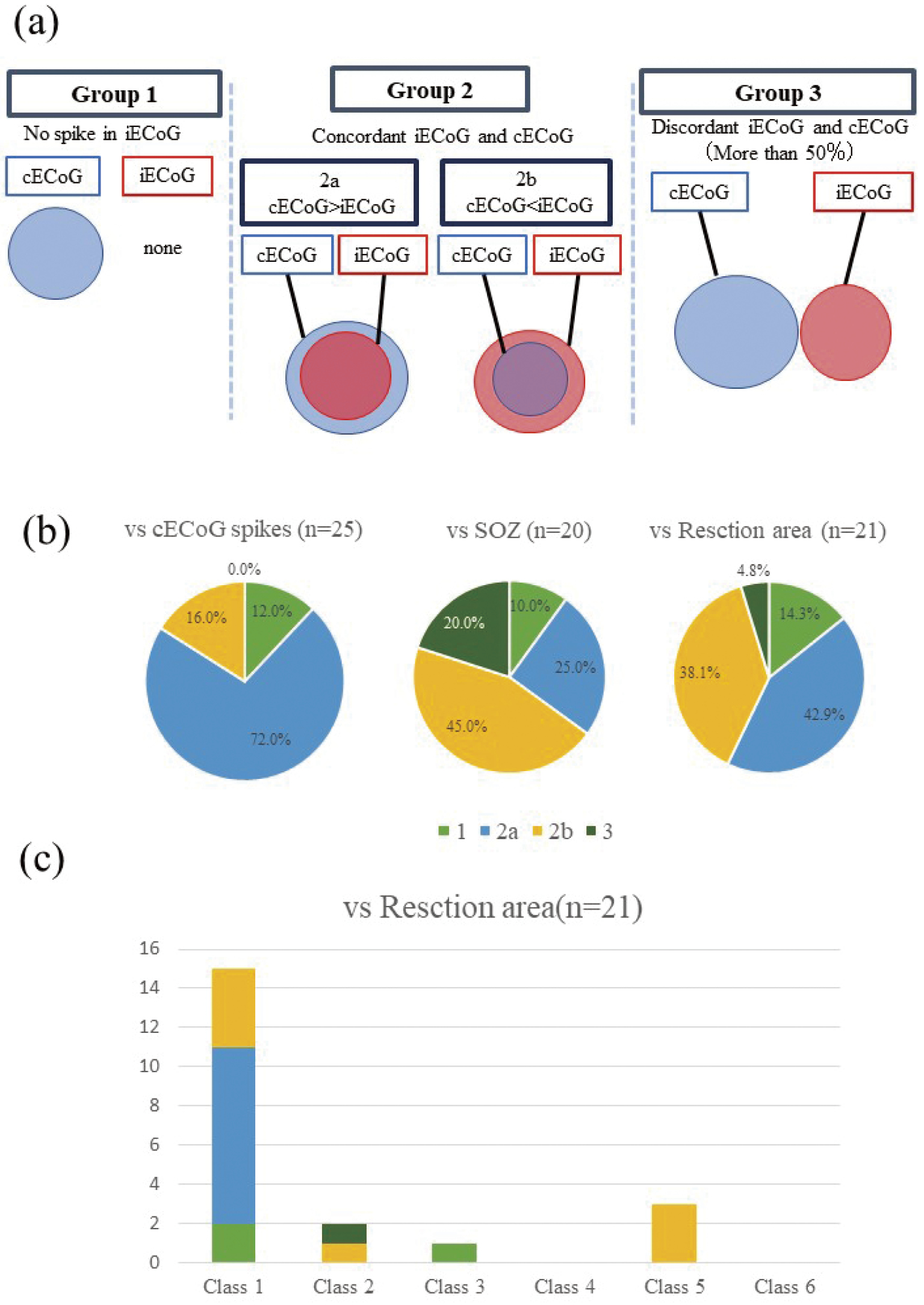1 0 0 0 OA Usefulness of Intraoperative Electrocorticography for the Localization of Epileptogenic Zones
- 著者
- Ryohei CHIBA Rei ENATSU Aya KANNO Tomoaki TAMADA Takuro SAITO Ryota SATO Nobuhiro MIKUNI
- 出版者
- The Japan Neurosurgical Society
- 雑誌
- Neurologia medico-chirurgica (ISSN:04708105)
- 巻号頁・発行日
- pp.2022-0252, (Released:2022-11-25)
- 参考文献数
- 16
- 被引用文献数
- 1
Intraoperative electrocorticography (iECoG) is widely performed to identify irritative zones in the cortex during brain surgery; however, several limitations (e.g., short recording times and the effects of general anesthesia) reduce its effectiveness. The present study aimed to evaluate the utility of iECoG for localizing epileptogenic zones. We compared the results of iECoG and chronic electrocorticography (cECoG) in 25 patients with refractory epilepsy. Subdural electrodes were implanted with iECoG under general anesthesia (2% sevoflurane). cECoG recordings were performed for 3-14 days. The distribution of iECoG spikes was compared with cECoG spike, seizure onset zone, and resection areas. The concordance patterns of each distribution were classified into four patterns: Group 1: No spike in iECoG, Group 2: concordant (2a: iECoG smaller, 2b: iECoG larger, Group 3: discordant >50%). The concordance rate of interictal spikes, seizure onset zones, and resection areas were 88.0% (Group 2a: 72.0%, Group 2b: 16.0%), 70.0% (Group 2a: 25.0%, Group 2b: 45.0%), and 81.0% (Group 2a: 42.9%, Group 2b: 38.1%), respectively. The resection of iECoG spike areas significantly correlated with good surgical outcomes. The indication and limitations of iECoG need to be realized, and the complementary use of iECoG and cECoG may enhance clinical utility.
